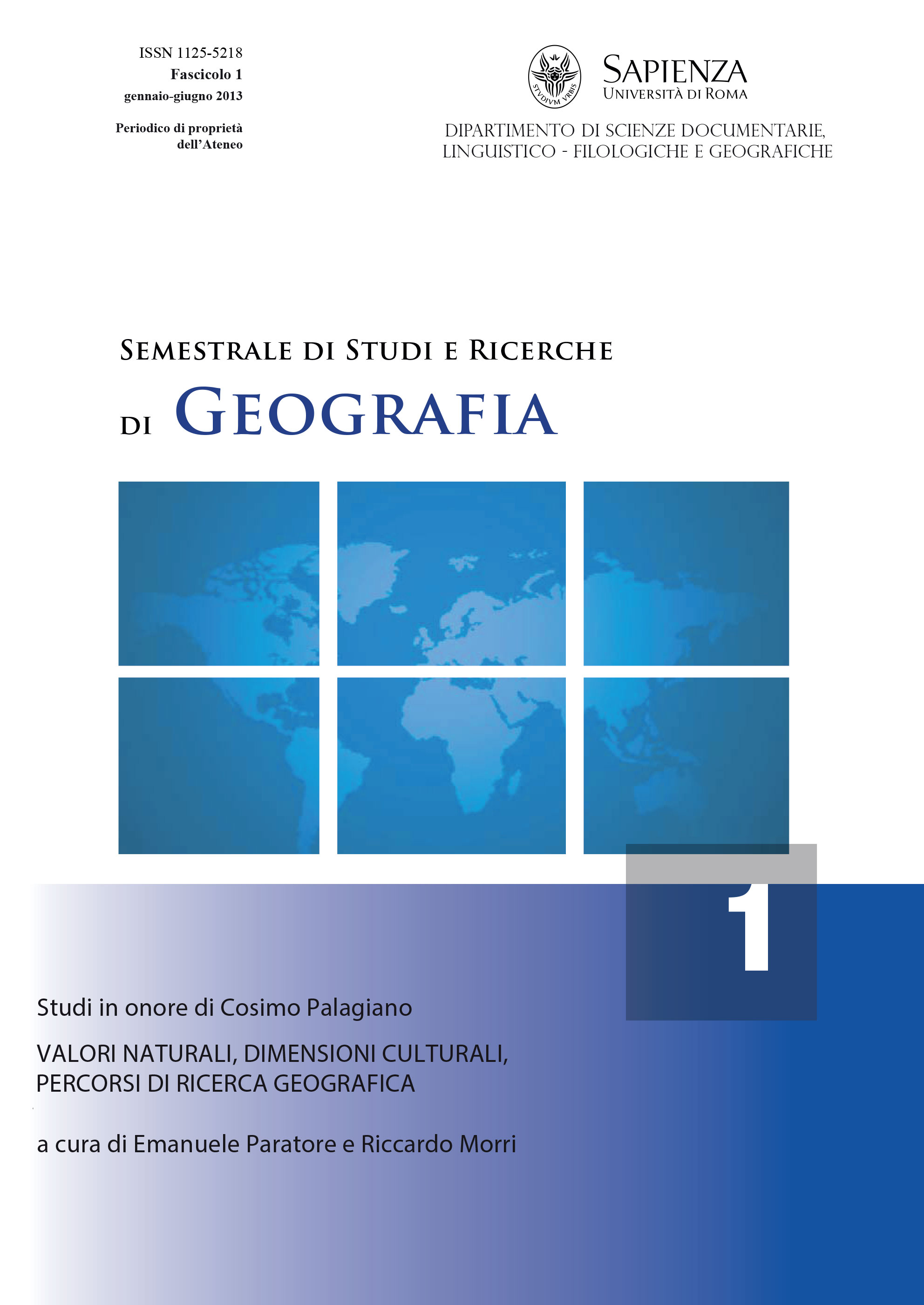LA DIMENSIONE SIMBOLICA DELLA MALATTIA. INTERPRETAZIONI SUL CASO ITALIANO
DOI:
https://doi.org/10.13133/1125-5218.15174Abstract
The Symbolic Dimension of Disease: An Interpretation of the Italian Case
Despite the deep evolution of scientific paradigms, conventional medicine
is still strongly linked to a structuralist and reductionist approach, which
focuses the attention on the organ or organic function to be repaired,
using chemical solutions, electromagnetic devices, surgery.
The concept of care, implicit in the medical profession, has given way to
a mere use of the technologically advanced solutions proposed by the
big companies of the medical and pharmaceutical sector, both in the
diagnostic and therapeutic moment. This approach, as already pointed
out Ivan Illich, has created the dependence of the individuals by the
continuous instrumental monitoring of their state of health, inhibiting
the capacity of listening their symptoms and the possibility of reflecting
on the deep meaning of their illness.
After having introduced the theoretical assumptions of that branch
of alternative medicine which associates a symbolic meaning to every
organ and organic function – reasoning, therefore, on an analog
basis – the paper examines the potential applications of this particular
approach, providing an interpretation of disease in Italy, with particular
reference to cancer mortality. Assuming that the disease is always
the manifestation of a relational or existential distress who asks to be
addressed, the paper examines the possibility of using this approach to
understand the roots of the social problems affecting the collectivities
of the territorial contexts examined, starting from the distribution of the
diseases with a high symbolic content.
La dimension symbolique de la maladie: une possible lecture du cas italien
Aujourd'hui, la médecine conventionnelle est encore très liée à une
approche structuraliste et réductionniste à la fois: elle se concentre en
effet sur tel ou tel organe, et sur leurs fonctions, en cherchant, pour la
“réparation”, des solutions chimiques ou en se remettant à la chirurgie
et aux dispositifs électromagnétiques. Et tout cela, au-delà de l'évolution
reconnue des paradigmes scientifiques. Ce qui était implicite dans
la profession même du médecin, c'est-à-dire le concept de soin, a été
donc substitué par des solutions technologiques soit-disant avancées.
Ce sont donc, en réalité, les grandes enterprises pharmaceutiques et
médicales qui interviennent dans le moment du diagnostic, bien-sûr, mais
même dans la thérapie. Les individus subissent donc, c'est M. Ivan Illich
qui l'a souligné, une sorte de dépendance de la technologie pour ce
qui concerne le monitorage continu de leur santé. Il est évident que la
plupart des individus perd à la fois la capacité d'écouter les symptômes et
l'occasion pour réfléchir sur la signification profonde de la maladie.
Le travail commence par introduire les fondements théoriques de cette
branche de la médecine alternative associant une signification symbolique
à chaque organe et à chaque fonction organique (on raisonne donc sur
une base analogique). Il s'agit d'une approche tout-à-fait particulière
conduisant à des applications potentielles. L'Auteur donne donc une
“lecture” de la maladie en Italie se référant en particulier à la mortalité
pour cancer. Il présuppose que la maladie représente la manifestation
d'un malaise relationnel ou existentiel. Dans ce cas, la maladie serait la
requête d'une aide. Cette approche, c'est la thèse de l'Auteur, porrait
bien nous amener à comprendre même les racines des problèmes sociaux
qu'on a observé dans les territoires étudiés, en partant de la distribution
de ces maladies possédant un haut contenu symbolique.
##submission.downloads##
Pubblicato
Fascicolo
Sezione
Licenza
Gli autori che pubblicano su questa rivista accettano le seguenti condizioni:- Gli autori mantengono i diritti sulla loro opera e cedono alla rivista il diritto di prima pubblicazione dell'opera, contemporaneamente licenziata sotto una Licenza Creative Commons - Attribuzione che permette ad altri di condividere l'opera indicando la paternità intellettuale e la prima pubblicazione su questa rivista.
- Gli autori possono aderire ad altri accordi di licenza non esclusiva per la distribuzione della versione dell'opera pubblicata (es. depositarla in un archivio istituzionale o pubblicarla in una monografia), a patto di indicare che la prima pubblicazione è avvenuta su questa rivista.
- Gli autori possono diffondere la loro opera online (es. in repository istituzionali o nel loro sito web) prima e durante il processo di submission, poiché può portare a scambi produttivi e aumentare le citazioni dell'opera pubblicata (Vedi The Effect of Open Access).


